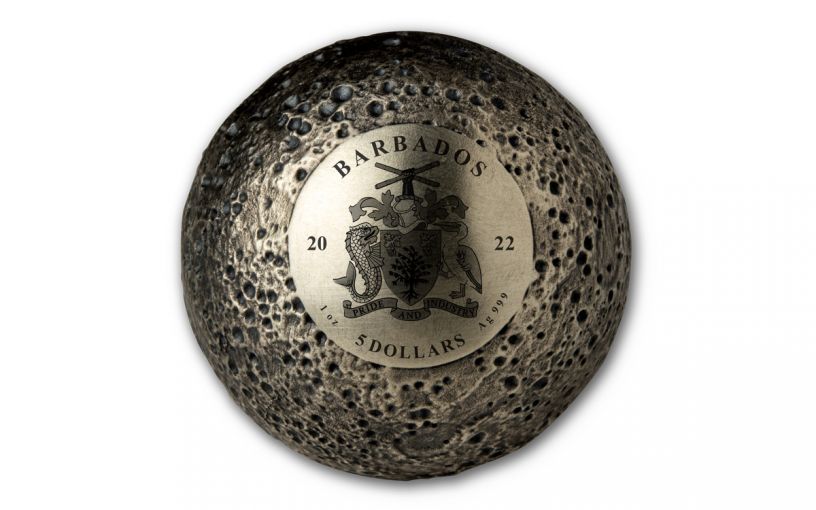Coin Display
2022 Barbados $5 1 oz Silver Mercury Sphere Antiqued Coin
2022 Barbados $5 1 oz Silver Mercury Sphere Antiqued Coin
Couldn't load pickup availability
An Astonishing Miniature Of Earth’s Sunbaked Neighbor
Tiny little Mercury is only slightly bigger than our moon. In fact, this sunbaked sphere resembles the moon in many ways with countless craters dotting its rocky surface. A planet of harsh contrasts, the sunny side of this lifeless world reaches temperatures as hot as 800° Fahrenheit while nighttime temperatures plummet to around 330 degrees below zero! If life DOES exist there it would be a miracle thanks to Mercury’s thin atmosphere and blistering solar radiation. While it’s highly unlikely any human will ever be able to set foot on this inhospitable planet, you can still explore its nooks and crannies through this magnificent silver coin that’s an exact reproduction of our solar system’s first planet.
Innovative Coin Celebrates The “Swift Planet”
Following in the footsteps of its popular spherical planet coins, Barbados now turns its attention to the solar system’s “Swift Planet” with this spherical coin struck in a full ounce of highly pure 99.9% fine silver. Limited to just 4,879 pieces—which is also the diameter of Mercury (4,879 kilometers)—this sphere displays a depiction of Mercury with the planet’s charcoaled and pock-marked surface achieved through an antiqued finish. The antiqued finish gives this coin an appearance of Mercury as if you were viewing it in space. To achieve this effect, the spherical shape was cast and polished manually before a unique antique finish is added. Because the painstaking process is done by hand, no two coins are exactly alike!
Mercury is known as the Swift Planet because it completes its rotation of the sun in only 88 days, by far the fastest planet in the solar system. That’s in contrast to the243 days its takes for Venus, 365 days for Earth and 687 days for Mars. Because Mercury is so close to the Sun, it can be observed from Earth only at dawn or twilight when the Sun’s brightness doesn’t outshine the little planet. However, 13 times each century, astronomers can watch Mercury pass across the face of the Sun in an event called a transit. The most recent transit occurred on November 11, 2019.
Share





